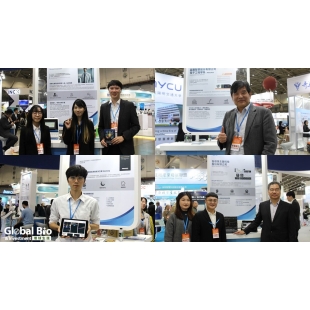All News
-
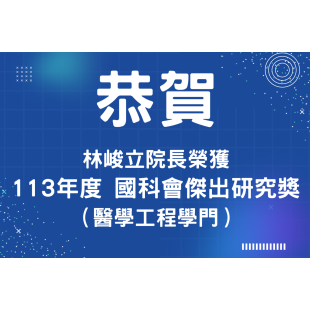
[ Congrats ] Dean Jun-Li Lin has been awarded the 113th National Science and Technology Council Outstanding Research Award in the field of Medical Engineering!
[ Congrats ] Dean Jun-Li Lin has been awarded the 113th National Science and Technology Council Outstanding Research Award in the field of Medical Engineering!more -
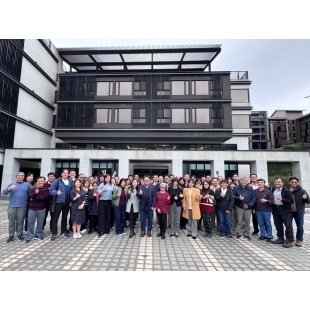
Our College's 2025 Team Building Successfully Concluded on February 14.
2025.02.14 The Annual College Future Development Consensus Meeting Was Held at the Asia Pacific Hotel Beitou.
Our College's 2025 Team Building Successfully Concluded on February 14.more -
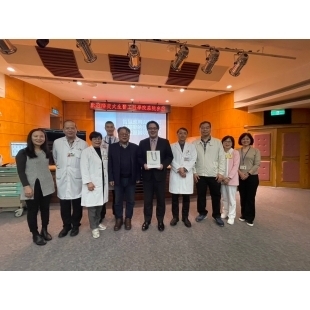
2025.02.14 Highlights of Our Visit to Taipei Municipal Guandu Hospital
2025.02.14 Visit to Taipei Municipal Guandu Hospital
We sincerely appreciate Superintendent Dr. Liang-Kung Chen and his team at Guandu Hospital for organizing our visit and exchange. This visit provided valuable insights into the hospital’s outstanding achievements in advancing smart healthcare.
【On-Site Exhibition: RF Smart Hospital】2025.02.14 Highlights of Our Visit to Taipei Municipal Guandu Hospitalmore -
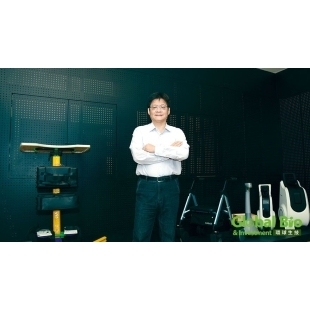
[ Repost ] NYCU Department of physical therapy and assistive technology Launches the "Human-Machine Integration" & "Active Living Mobility Sharing Alliance."
長照3.0鳴槍!智慧科技輔具商模落地
結合工程科技 實現「人機一體」智慧輔具願景
游忠煌出身機械工程背景,研究專長為機電整合、訊號擷取、處理與動作分析,並擁有英國倫敦大學學院(University College London)醫學物理與生物工程博士學位。在BIO+ICT整合當道的陽明交大校園中,游忠煌的醫工專業,使他成為系上推行跨領域溝通的靈魂人物之一。
游忠煌表示,「人機一體」輔具是實現樂活願景的解決方案,且健康者、生病者、失能者都用得到。對健康者而言,他們需要能夠趨吉避凶的預防醫學;對生病者而言,需要復健工程替他們重拾健康;對失能者而言,則需要科技輔具為他們減輕痛苦與不便。他說明,人機一體的早期概念,可以用武俠小說中所說的「人劍合一」來比擬,縱使有絕世好劍,使用者還是需要透過學習、練習或訓練才能達成。但在加入輔助科技後,例如在傳統輔具上增添感測、顯示或致動的功能,就能讓使用者和治療師越來越輕鬆,同時降低患者的使用門檻。
智慧機電輔具因應病況、情境變化
目前,在游忠煌的智慧型機電輔具實驗室中,已經開發出多種人機一體輔具。「我們將物理治療師的know-how整合其中,有助於減輕治療師的工作壓力,也讓患者獲得更安全、量身打造的輔助科技。」游忠煌說。
步態評析系統»
在物理治療中經常使用的「六分鐘步行測試」,是藉由六分鐘內觀察患者在坐、站、走路的來回過程中,評估患者的運動耐力和心肺功能。過程中物理治療師必須全神貫注、觀察評估,相當耗費精力。
游忠煌研究團隊開發的步態評析系統,能在與錄影裝置搭配之下,將治療師想要觀察的項目盡數自動化分析,分階段評估患者的花費時間、行走能力、步態穩定狀況,大幅減輕治療師的負擔。
游忠煌表示,這種裝置能夠在醫院以外的場域,提供預防醫學服務。例如設置在村里長辦公室或偏鄉健檢,讓民眾走6分鐘,就能從步態知道是否有帕金森氏症、中風或輕微認知損傷的徵兆。
安全助步車»
許多亞健康者會使用助步車,但經常在上坡時會擔心助步車下滑、下坡時擔心速度失控,倘若在上/下坡的同時還要一邊橫越斜坡,其實對患者或長輩都很難操控、危險性很高。
在改良的安全助步車中,會在使用者上坡時自動切換成棘輪模式,阻止輪子在使用者分神時便往下滑....(至環球生技官網閱讀全文)
報導連結:環球生技
[ Repost ] NYCU Department of physical therapy and assistive technology Launches the "Human-Machine Integration" & "Active Living Mobility Sharing Alliance."more -
Gathering for the Year-End Party — The College of Biomedical Science and Engineering wishes you a Happy New Year!
114/01/13 Annual Year-End Banquet of the College of Biomedical Science and Engineering & College of Pharmaceutical Sciences
\Gathering for the Year-End Party — The College of Biomedical Science and Engineering wishes you a Happy New Year!more -

Congratulations to our college for receiving the 2024 21st National Innovation Award
《Biocompatible Spider Silk-Based Metal-Dielectric Optical Fiber Suger Sensor》
Professor Cheng-Yang Liu, National Yang Ming Chiao Tung University Team
Congratulations to our college for receiving the 2024 21st National Innovation Awardmore -
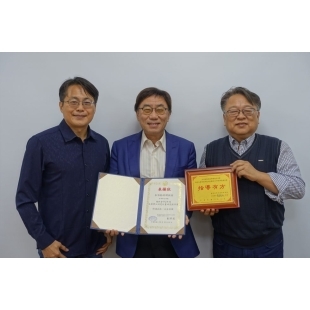
Congratulations to Professor Woei-Chyn Chu for guiding students to win three awards
\ Congratulations to Professor Woei-Chyn Chu for guiding students to win three awards /
1. 2024【Taiwan Society of Perinatology】Paper Award - First-Class
PhD student Wu Yi-Cheng「Fetal Aortic Blood Flow Velocity and Power Doppler Profile in the First Trimester: A Comprehensive Study Using High-Definition Flow Imaging」
2. 2024 JMBE ANNUAL EXCELLENT PAPER AWARD
Master's student Hsin-Ya Su,「A Practical Computer Aied Diagnosis System for Breast Ultrasound Classifying Lesions into the ACR BI-RADS Assessment」
3. The National Science and Technology Council's 2023 University Student Research Program – Research and Creative Award
Student Chen Jing-Zhong has achieved excellent results and demonstrated creativity.Congratulations to Professor Woei-Chyn Chu for guiding students to win three awardsmore -
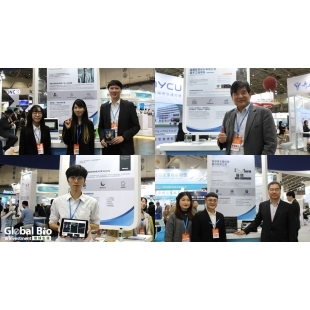
[ Repost ] NYCU Office of Industry-Academy Co-Creation Unites Innovation: Nucleic Acid Testing, Organ-on-a-Chip, and Smart Healthcare Solutions Unveiled
12月5日至12月8日,國立陽明交通大學於南港展覽館1館舉辦的「2024台灣醫療科技展」中展出多項創新技術。今年陽明交大由產學共創處帶領10家新創研發團隊,於現場展出多項研發成果,領域涵蓋醫療器材、再生醫療、智慧醫療、醫療資訊、人工智慧(AI)等。
其中,晶醫智慧的行動核酸檢測解決方案、久浪智醫的智慧器官晶片平台、台灣數位健康的AI居家睡眠檢測與服務方案、智德萬生醫的AI腦瘤輔助偵測系統,創新技術讓許多專業人士及觀展民眾駐足。
智德萬生醫:完善術前術後診斷 第二代雙參數AI腦瘤偵測認證申請中
陽明交大創新醫材轉譯研發中心及生醫光電研究所吳育德特聘教授,與臺北榮總放射部郭萬祐主治醫師領導的智德萬生醫,繼先前開發的可針對聽神經瘤、腦膜瘤與腦轉移瘤,三種主要腦癌的磁振造影(MRI)影像,進行自動偵測與圈註病灶範圍的AI腦瘤輔助偵測系統(DeepBT Detector)後,再度研發升級版本....(至環球生 技官網閱讀全文)
報導連結:環球生技[ Repost ] NYCU Office of Industry-Academy Co-Creation Unites Innovation: Nucleic Acid Testing, Organ-on-a-Chip, and Smart Healthcare Solutions Unveiledmore -
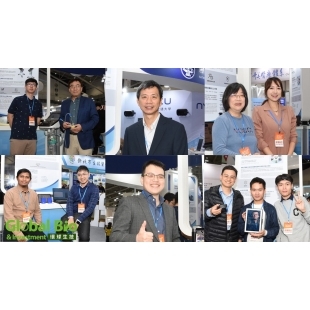
[ Repost ] NYCU Office of Industry-Academy Co-Creation Leads 10 Startups to Showcase Achievements in Medical Devices, Regeneration, and Smart Healthcare
國立陽明交通大學於12月5日至12月8日間,在南港展覽館1館舉辦的「2024台灣醫療科技展」中設置主題館。今年陽明交大由產學共創處帶領10家新創研發團隊,於現場展出多項研發成果,領域涵蓋醫療器材、再生醫療、智慧醫療、醫療資訊、人工智慧(AI)等。
其中,聯創生醫的壓力差導引骨水泥灌注裝置、陽明立方的立方工作站、陽明寶生技的人類臍帶間質幹細胞製劑、慧心醫診的智慧ECG AI系統、柯立偉教授團隊的穿戴式腦機介面、邊信聯科技的智慧醫療資訊交換系統,吸引專業人士及觀展民眾的目光。
聯創生醫:iKypho導引骨水泥灌注裝置 解決椎體手術臨床未滿足需求
由陽明交大醫工系朱唯勤特聘教授領軍開發的「iKypho壓力差導引骨水泥灌注裝置」,是一項針對椎體成形手術臨床未滿足需求所開發的創新醫療器材,並在經濟部價創計畫補助下,於2022年正式成立聯創生醫。朱唯勤表示,椎體成形手術長年以來在骨水泥灌注......(至環球生技官網閱讀全文)
報導連結:環球生技[ Repost ] NYCU Office of Industry-Academy Co-Creation Leads 10 Startups to Showcase Achievements in Medical Devices, Regeneration, and Smart Healthcaremore -
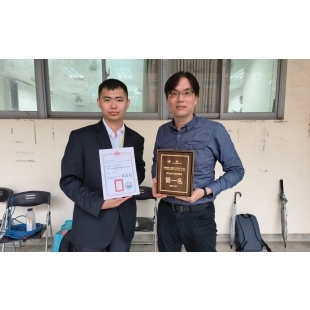
Congratulations to our college for receiving the First Prize in the 41th Chinese Society of Mechanical Engineering (CSME) Thesis Award.
Congratulations to the winning teachers and students!
【41th Chinese Society of Mechanical Engineering (CSME) Thesis Award】First Prize
Graduate student Wu Yi-Qin's research「Two-Stage Chemical Vapor Deposition (CVD) Technique for Large-Scale WS₂ 2D Materials」
Advisor : Cheng-Yang Liu
Congratulations to our college for receiving the First Prize in the 41th Chinese Society of Mechanical Engineering (CSME) Thesis Award.more -
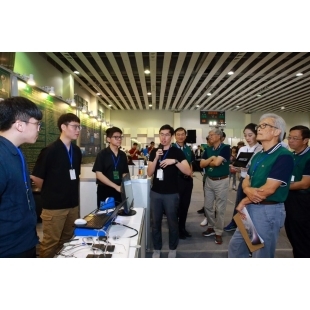
Congratulations to our college for receiving the Excellence Award in the 2024 Net Zero Tech International Contest @Taiwan
Congratulations to our college for receiving the Excellence Award
in the 2024 Net Zero Tech International Contest @Taiwan
Liu Ta-Chung (Advisor)
Yang Jung-Hao.Hsu Chen-Xuan.Weng Yung-Cheng.Lin Hung-Cheng.He Shao-Chi
【A rechargeable zinc-air battery enabled by a solid hydrogel electrolyte in both atmospheric and low-temperature conditions】Congratulations to our college for receiving the Excellence Award in the 2024 Net Zero Tech International Contest @Taiwanmore -

Teaching Excellence Award for EMI Courses
Congratulations to the recipients of the EMI Teaching Excellence Award
〔Department of Biotechnology and Lab Science in Medicine〕Shiao-Ya Hong, Yuh-Ching Twu
〔Department of Biomedical Imaging and Radiological Sciences〕Ming-Hsien Chan, Hui-Yen Chuang
〔Department of Physical Therapy and Assistive Technology〕Li-Wei Chou, Chiao-Nan Chen
〔Department of Biomedical Engineering〕Chun-Min Lo, Cheng-Yang Liu
〔Institute of Biophotonics〕Yih-Fan ChenTeaching Excellence Award for EMI Coursesmore







